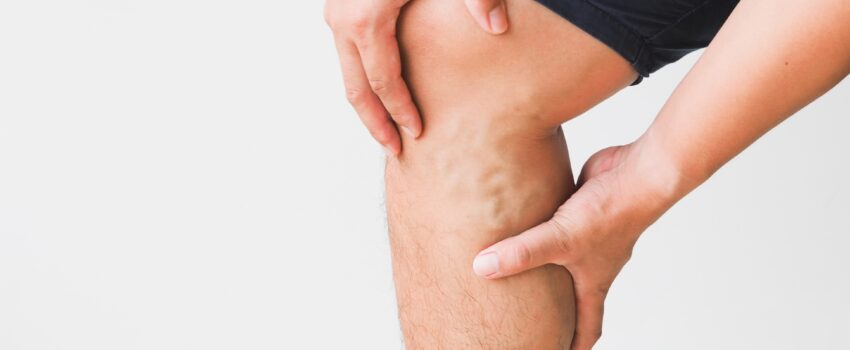Whether a person has suffered from varicose veins for years or is experiencing the first signs of the condition, they can cause significant distress. Prominent leg veins can cause cosmetic concerns—leading to changes in quality of life—as well as physical symptoms.
Read on to learn about six common symptoms of varicose veins, as well as how to treat varicose vein symptoms.
What Are Varicose Veins?
A varicose vein is a blood vessel that becomes enlarged, causing a bulging or raised appearance just beneath the surface of the skin. These veins can often appear webbed or tangled, and they can vary in color from reddish to a deep blue. They are caused by the backup of blood while it is circulating around the body. When the valves that control the flow of blood through a vein become damaged, blood can pool and cause changes in the structure of the vein.
6 Common Symptoms of Varicose Veins
Varicose veins can easily affect a person’s self-esteem and quality of life. The following physical symptoms are commonly experienced:.
1. Leg Pain
One of the first symptoms of a varicose vein may be pain, aching, or cramping in the affected area. Sometimes, varicose veins can also provoke a throbbing sensation.
2. Visible Changes
They often cause visible changes, such as an increase in the size or color of a vein, or the development of a bulging appearance.
3. Fatigue
These veins can cause fatigue or tiredness in the legs, especially during times when more blood is pooling (such as after a sedentary period).
4. Itching
Some people with varicose veins will experience an itching or burning sensation, along with dry, eczematous-type skin changes.
5. Poor Healing Time
Because varicose veins can disrupt the proper flow of blood back to the heart, wounds in the region of a the vein may ulcerate or take longer to heal.
6. Heaviness
Varicose veins can trigger a feeling of heaviness in the affected leg. They can make a person’s legs feel restless and also make it difficult to perform daily activities comfortably.
Treatment Options
Sometimes, varicose veins can be treated with conservative measures alone. Increasing movement and physical exercise, losing weight, and using compression stockings can help amplify the return of blood to the heart and decrease the appearance and symptoms.
However, sometimes, lifestyle changes are not enough to limit the pesky symptoms of varicose veins. In these cases, other treatment options, such as the following, can be beneficial:
- Sclerotherapy: During this procedure, the provider injects a special chemical into a small vein, causing the vein to collapse and eventually fade away.
- Endovenous radiofrequency ablation: An endovenous laser ablation treatment helps seal a vein using pulsed heat waves. The blood naturally finds a new circulatory route once the varicose vein collapses.
- Ultrasound-guided sclerotherapy: During this minimally invasive procedure, the provider uses ultrasound to help determine the precise location for injection of an irritating foam that causes a varicose vein to collapse.
- VeinGogh™ ohmic thermolysis system: During this advanced form of treatment, the provider uses a very small needle to deliver high bursts of heat into veins that occur in delicate areas, such as facial veins.
How to Learn More About Treating Varicose Veins
Don’t let varicose vein symptoms get in the way of living life. At a professional vein treatment center like North Shore Vein Center, a number of minimally invasive vein treatments are available to help stop symptoms in their track. Mark Schwartz, MD, FACS, RPVI, widely known as the “Long Island Vein Doctor,” can help alleviate leg vein symptoms using state-of-the-art technologies.
To learn more, make sure to contact us at North Shore Vein Center today.

